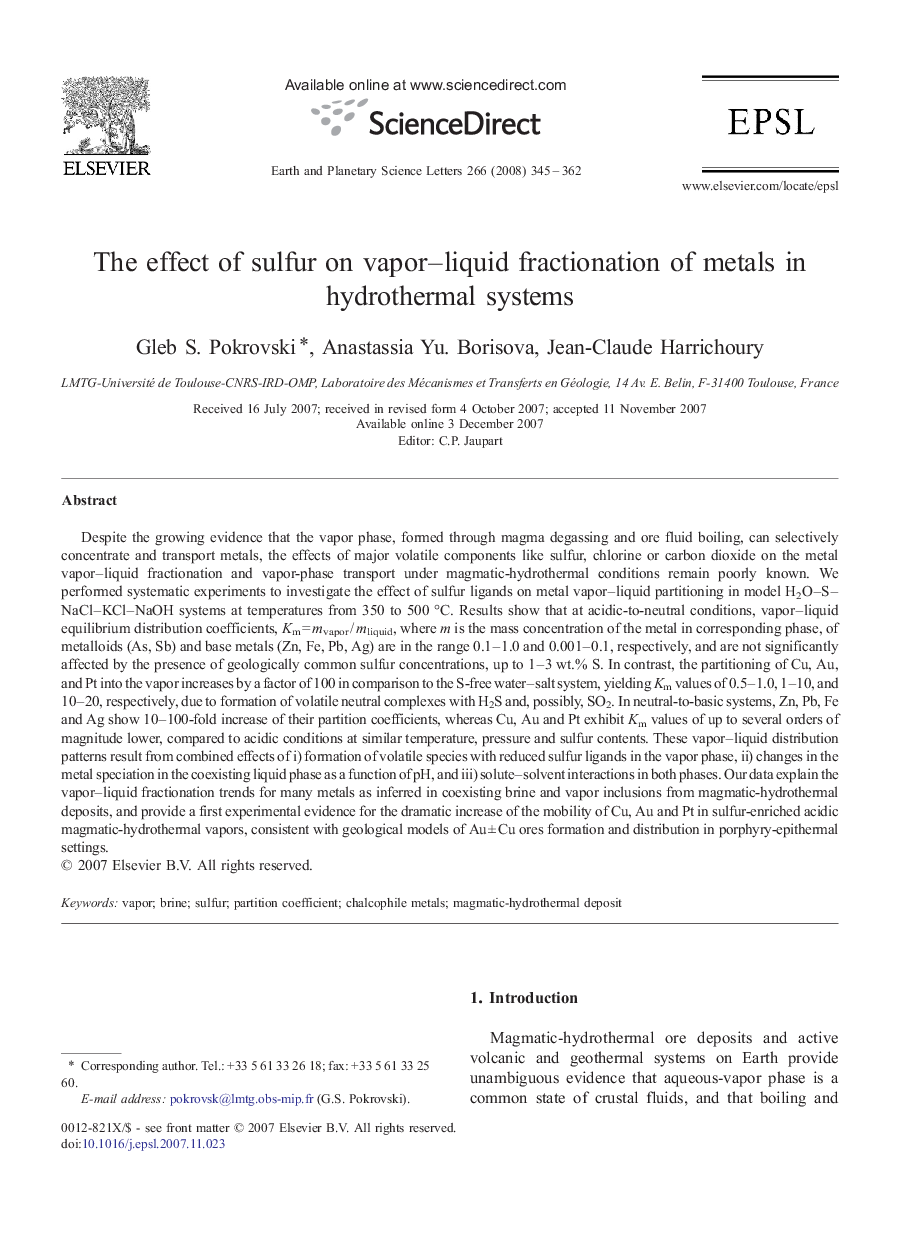| کد مقاله | کد نشریه | سال انتشار | مقاله انگلیسی | نسخه تمام متن |
|---|---|---|---|---|
| 4679844 | 1634902 | 2008 | 18 صفحه PDF | دانلود رایگان |

Despite the growing evidence that the vapor phase, formed through magma degassing and ore fluid boiling, can selectively concentrate and transport metals, the effects of major volatile components like sulfur, chlorine or carbon dioxide on the metal vapor–liquid fractionation and vapor-phase transport under magmatic-hydrothermal conditions remain poorly known. We performed systematic experiments to investigate the effect of sulfur ligands on metal vapor–liquid partitioning in model H2O–S–NaCl–KCl–NaOH systems at temperatures from 350 to 500 °C. Results show that at acidic-to-neutral conditions, vapor–liquid equilibrium distribution coefficients, Km = mvapor / mliquid, where m is the mass concentration of the metal in corresponding phase, of metalloids (As, Sb) and base metals (Zn, Fe, Pb, Ag) are in the range 0.1–1.0 and 0.001–0.1, respectively, and are not significantly affected by the presence of geologically common sulfur concentrations, up to 1–3 wt.% S. In contrast, the partitioning of Cu, Au, and Pt into the vapor increases by a factor of 100 in comparison to the S-free water–salt system, yielding Km values of 0.5–1.0, 1–10, and 10–20, respectively, due to formation of volatile neutral complexes with H2S and, possibly, SO2. In neutral-to-basic systems, Zn, Pb, Fe and Ag show 10–100-fold increase of their partition coefficients, whereas Cu, Au and Pt exhibit Km values of up to several orders of magnitude lower, compared to acidic conditions at similar temperature, pressure and sulfur contents. These vapor–liquid distribution patterns result from combined effects of i) formation of volatile species with reduced sulfur ligands in the vapor phase, ii) changes in the metal speciation in the coexisting liquid phase as a function of pH, and iii) solute–solvent interactions in both phases. Our data explain the vapor–liquid fractionation trends for many metals as inferred in coexisting brine and vapor inclusions from magmatic-hydrothermal deposits, and provide a first experimental evidence for the dramatic increase of the mobility of Cu, Au and Pt in sulfur-enriched acidic magmatic-hydrothermal vapors, consistent with geological models of Au ± Cu ores formation and distribution in porphyry-epithermal settings.
Journal: Earth and Planetary Science Letters - Volume 266, Issues 3–4, 29 February 2008, Pages 345–362